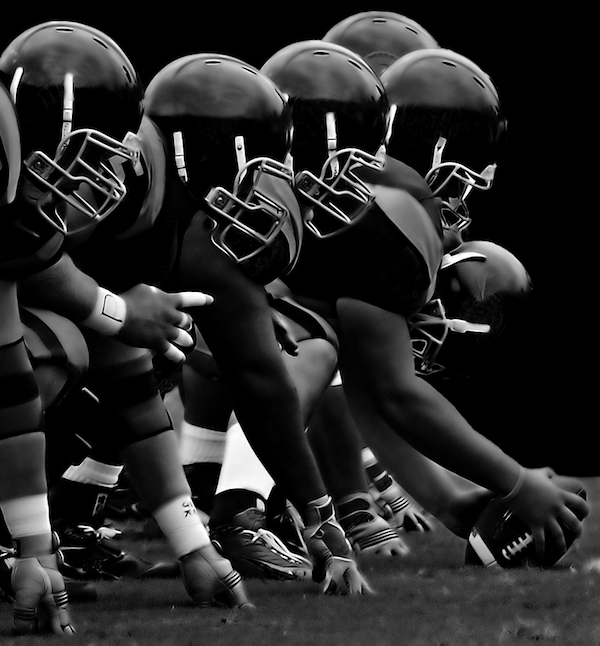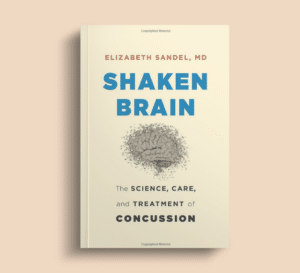Brain Injury Research — Still Lacking in the 21st Century

Yes, all but one of the 111 NFL brains had chronic traumatic encephalopathy or CTE.
The post-mortem case study published in the July issue of JAMA (Mez, et.al.) raises a major question about the future of football. Most of the cases represent former professional football players and a small number are studies of the brains of high school and college players.
While the media pays special attention to the NFL and the football question, I have 50 additional questions about concussion.
- Diagnosis. Was it a brain injury? What lab biomarker could help us verify that a patient had a concussion or mild brain injury? What are the best neuroimaging studies to assist in making the diagnosis and aiding prognosis? How can we diagnose subconcussions, those injuries identified after the fact because they weren’t obvious at the time? What lab biomarkers or neuroimaging studies can help to diagnose chronic effects such as post-concussion syndrome as well as CTE?
- Pathophysiology. What happens inside the brain? Is a concussion the clinical manifestation of a functional (physiological) or a structural (anatomic) injury or is that a misguided distinction? Is one concussion, from whatever cause, one too many? What happens to the brain with a subconcussion? Are the effects of repetitive concussions additive or exponential? What happens over time from the beginning to the end of exposure(s) to concussion? What are the contributions of tauopathy and other processes causing neurodegeneration after concussion? What factors contribute to the risk of seizures that can occur even after one concussion? How do blast injuries in soldiers and other people exposed to IEDs differ from other brain injuries? What makes PTSD and concussion different in terms of what happens to the brain? What is the role of neuroplasticity after concussion and does it vary across age groups and genders? What is the role of other possible contributors, such as substance use, to the long-term effects of a concussion? What are interventions to prevent neurodegeneration and promote neuroplasticity after a concussion?
- Biomechanics: What forces make concussions happen in various situations? What are the G-forces and other biomechanical factors necessary to cause concussion or subconcussion in various human activities? What are the kinesiological (human movement) factors, such as the relationship of the head to the ball in soccer, that play a role in causing a concussion? Do biomechanics differ depending on age or gender or other human factors?
- Risk Factors: Who, what, when, where and how? What are the primary risk factors for concussion in Infants and young children? Adolescents? Young adults? The elderly? What role does genetics play in the vulnerability of people to the effects of concussion? Are family history or genetics contributors to outcomes after concussion? Why do females playing the same sport as males have higher rates of concussion and post-concussion syndrome? Do they have higher rates of CTE? What are the comparative risks for noncontact, contact, collision, and combat sports? Does the risk depend on the position played in various sports?
- Treatment: What are the best ways to help people with concussions and the late effects? What medical and psychological interventions, rehabilitation strategies, and complementary approaches are best for sleep disorders and fatigue? Mood disorders? Behavioral disturbances? Cognitive disorders? Pain, including headaches? Visual and hearing disturbances? Gait, balance, and vestibular disorders? How do we decide when and if athletes can return to play? After one concussion or more than one? What about return to school or work? Return to driving? How do we best support parents, families, and caregivers?
- Prevention: What can we do to decrease the incidence of concussion? Change sports play rules and equipment and for what sports? What about for other high risk recreational activities such cycling, skiing, skateboarding, etc.? What about preventing injuries from nursery products and during playground activities? Falls in the elderly? Motor vehicle crashes, including pedestrian injuries? Pediatric abusive head trauma? Domestic violence? The military? Our prisons? Can we improve work safety, especially in high risk jobs? Can we do more to prevent distracted or inebriated drivers from injuring others and themselves? What more can we do with legislation to decrease the incidence of concussion and prevent its long-term consequence.
These and many more questions remain unanswered. Overwhelming as this list might be, answers to these questions matter a lot to our patients and their families, and to those of us in the clinical world who are trying to help them. We need a national research plan now for concussion research, if we are going to tackle this major public health problem.
You Might Also Like
Can We Adequately Treat Concussion?
Finding a physician specializing in brain injury medicine can be difficult because the field is relatively new, but there are resources to help.
Getting Top-Notch Care after a Concussion
Concussion clinics vary in terms of protocols and personnel. Neuropsychologist Richard Delmonico discusses one model in the Kaiser Permanente health system.
The Shaken Brain with Mark Gilson featuring Elizabeth Sandel, M.D.
Mark Gilson WRFG Atlanta interviews Dr. Sandel. The interview is accompanied by thematic music about the brain and includes a discussion with Dr. Sandel on medical and societal issues related to brain injuries.
Keep up to date
Get updates on the latest in concussion, brain health, and science-related tools from Dr. Elizabeth Sandel, M.D.
By clicking SIGN UP, you agree to receive emails from Dr. Sandel and agree to our terms of use and privacy policy.
Get the book!




